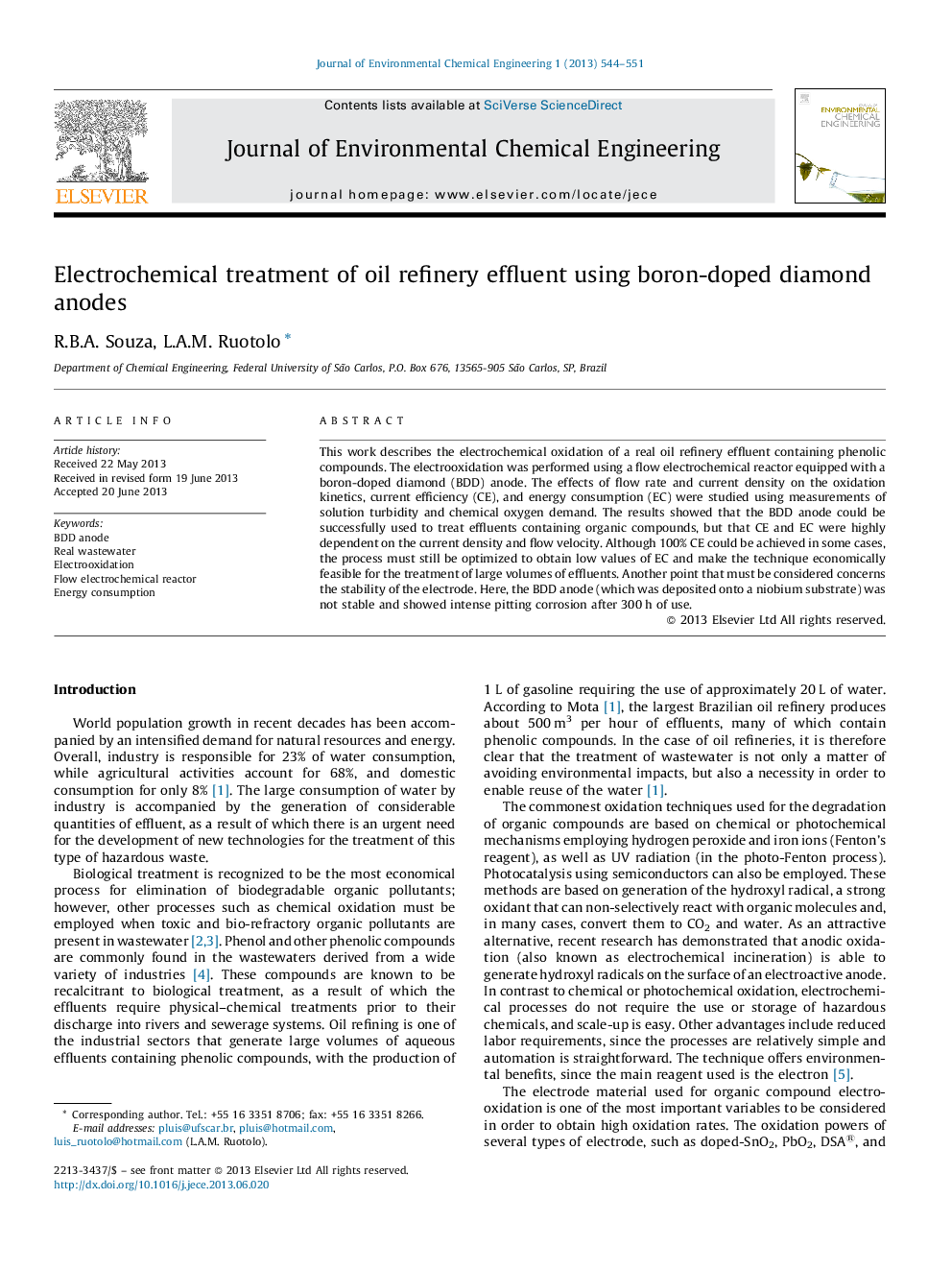| Article ID | Journal | Published Year | Pages | File Type |
|---|---|---|---|---|
| 222254 | Journal of Environmental Chemical Engineering | 2013 | 8 Pages |
•We studied the electrochemical degradation of a real industrial effluent.•Chemical oxygen demand can be efficiently removed from the effluent.•Cathodic reaction does not interfere on the overall degradation kinetics.•High energy consumption is still a challenge for electrochemical oxidation.•Nb/BDD anode was not stable for the degradation of real and simulated wastewaters.
This work describes the electrochemical oxidation of a real oil refinery effluent containing phenolic compounds. The electrooxidation was performed using a flow electrochemical reactor equipped with a boron-doped diamond (BDD) anode. The effects of flow rate and current density on the oxidation kinetics, current efficiency (CE), and energy consumption (EC) were studied using measurements of solution turbidity and chemical oxygen demand. The results showed that the BDD anode could be successfully used to treat effluents containing organic compounds, but that CE and EC were highly dependent on the current density and flow velocity. Although 100% CE could be achieved in some cases, the process must still be optimized to obtain low values of EC and make the technique economically feasible for the treatment of large volumes of effluents. Another point that must be considered concerns the stability of the electrode. Here, the BDD anode (which was deposited onto a niobium substrate) was not stable and showed intense pitting corrosion after 300 h of use.
Graphical abstractFigure optionsDownload full-size imageDownload as PowerPoint slide
